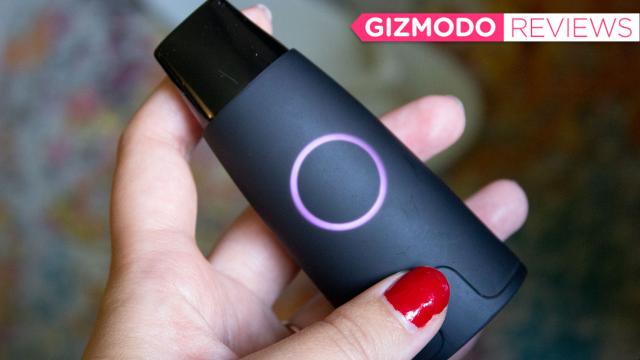If you think counting calories is tedious, I guarantee you counting macronutrients, or “macros,” is a bazillion times worse. It’s a painstaking process, and even the best food-logging apps often come up short. I have shaken a fist at the sky many times, pleading for an unnamed benevolent entity to grant me a faster metabolism and, barring that, a modest mountain of cash so I could hire a professional nutritionist to help me lose weight and get completely shredded.
Obviously, a higher power did not grant me my wishes. What I got instead was an email pitching Lumen, a metabolism tracker that analyses your breath to see if you’re burning fat or carbs. At this point, I’ve tried nearly everything else, so I thought: Why not?

Lumen
What is it?
A portable metabolism tracker
Price
$US350 ($508)
Like
Takes the guesswork out of deciding macros. Good app experience. Regularly checks in to adjust your plan.
No Like
Calibration is annoying.
You use Lumen first thing in the morning, and based on your results, you’ll get a daily customised nutrition plan via a companion app. You breathe in through the device, hold your breath for 10 seconds, and then breathe out. You repeat this three times, and then get a score from 1 to 5. A score of 1 or 2 indicates you are burning mostly fat; 3 means you’re burning both carbs and fat; and a score of 4 or 5 means you’re burning mostly carbs.
Based on your morning score — and your score over the previous couple of days — you’ll then get a recommended diet plan from the Lumen app. The macro levels you’re recommended depends on whatever goal you pick (i.e., healthy weight loss, training for an event, etc.). After four weeks, you then start getting a Lumen Flex score, which is supposed to be representative of how well your body shifts between burning fats and carbs.
I’ll admit, when I first read “metabolism tracker,” this wasn’t exactly what I had envisioned. I pictured something that would tell me whether my metabolism was fast or slow and give me advice on how to “boost” it. But that’s not what Lumen does — it’s more of a tool to see if you’re using the right type of fuel for your goals. The idea here is the better your body is at switching between fats and carbs, the more efficient your metabolism is and the easier it is to get the results you want.
If you’re new to the whole fat vs. carb discourse, here’s a quick rundown: Say you want to lose weight. These days, a popular method to drop pounds is to cut carbs to the point where your body starts using fat as your primary energy source. (This is the idea behind low-carb plans like Atkins and the ketogenic diet.) If you want to be a super-fast runner, however, you want to be burning carbs, as they’re easier to break down for that quick energy boost.
The thing is your body can only store so many carbs as glycogen in your muscles before it turns the excess into fat. The conundrum is having enough carbs to power your workouts (especially for endurance athletes), while also burning fat when you’re more sedentary. Striking this balance is important, but as the whole health and fitness industry will tell you, it can be very difficult for the average person to figure out alone. It’s a big reason why professional athletes are famous for having such meticulous eating regimens and a small army of nutritionists. (Tom Brady’s diet will actually make you cry both at its rigidity and pseudoscientific absurdity.)
Lumen positions itself as a gadget that an ordinary person can use in lieu of more expensive alternatives. I tested Lumen over the course of six weeks, and while I wouldn’t go so far to say as I’ve “hacked my metabolism,” I do have a better grasp of how my eating habits impact my training and efforts to lose weight.
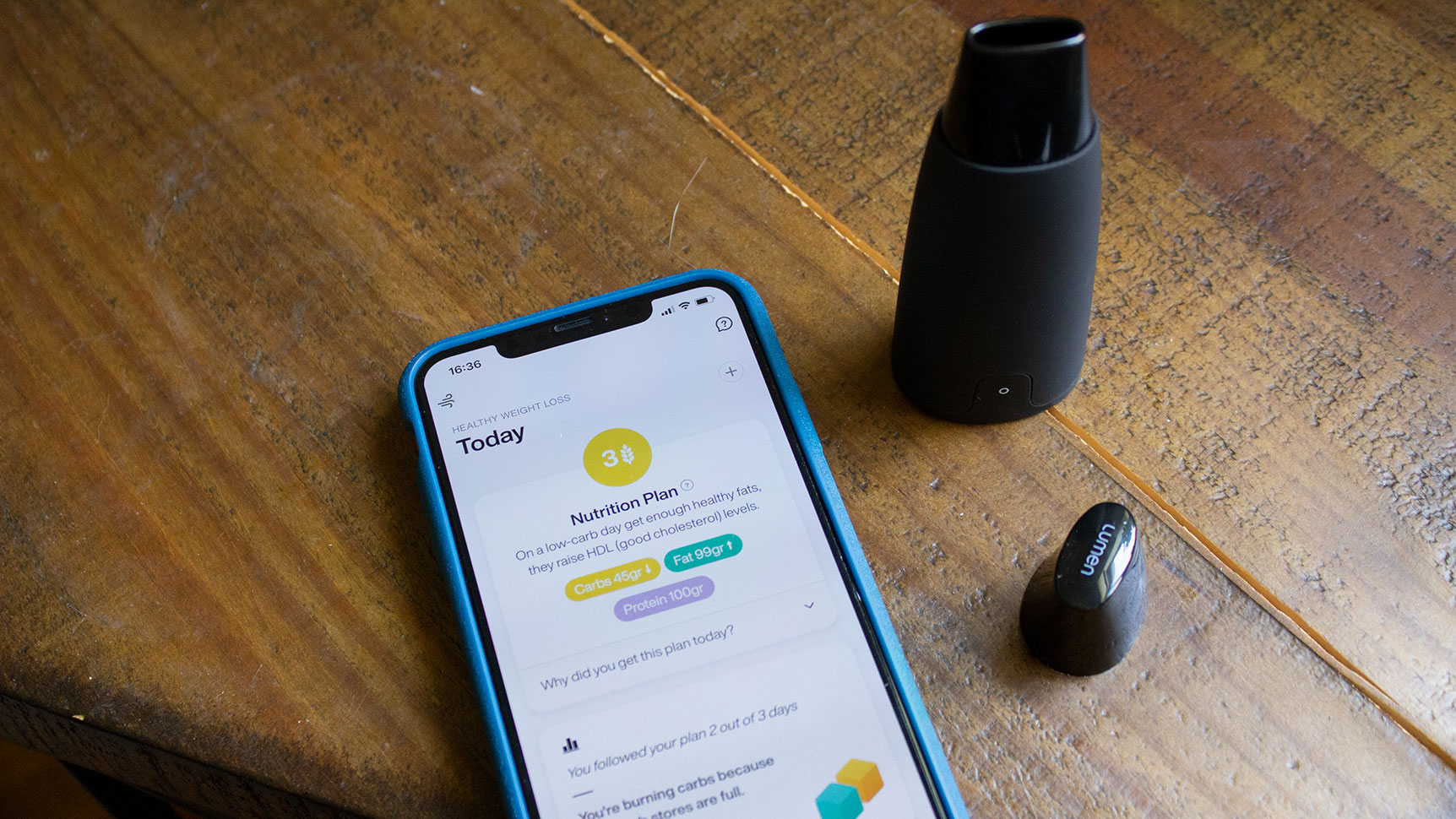
The gadget itself is well-made, simple to use, and highly portable. I carried it with me on a few hikes, it fits easily into a medium-sized pocket. It comes with a charging dock if you want to leave it on your nightstand, but I found you can get about a week on a single charge. Breathing measurements don’t take very long — about 2-3 minutes in total, though sometimes when I was in a rush it felt like it took forever. You do sort of sound like Darth Vader — or should I say Carb Vader? — in the process, but most people would probably mistakenly think you’re vaping.
More impressive was the app itself. There are videos to guide you on how you’re supposed to breathe in and out of the device, which does take some getting used to. The app also periodically checks in with you to see how easy or hard you find it to stick to a prescribed plan. When I started out, Lumen gave me low-carb days that included just three servings, or 45 grams, of carbs a day. This was not doable for me.
I like my grains, bread, and non-berry fruits, dammit! After blowing my targets day after day, the app prompted me with a few questions and then readjusted targets so that I could stick to the plan. I also liked that there were informational articles within the app explaining what Lumen defined as a carb serving, as well as a searchable database of how many carb servings are in a particular food. It also has meal suggestions, though most weren’t to my preferences. (It did help you visualise, however, what the breakdown of your daily meals should look like.)
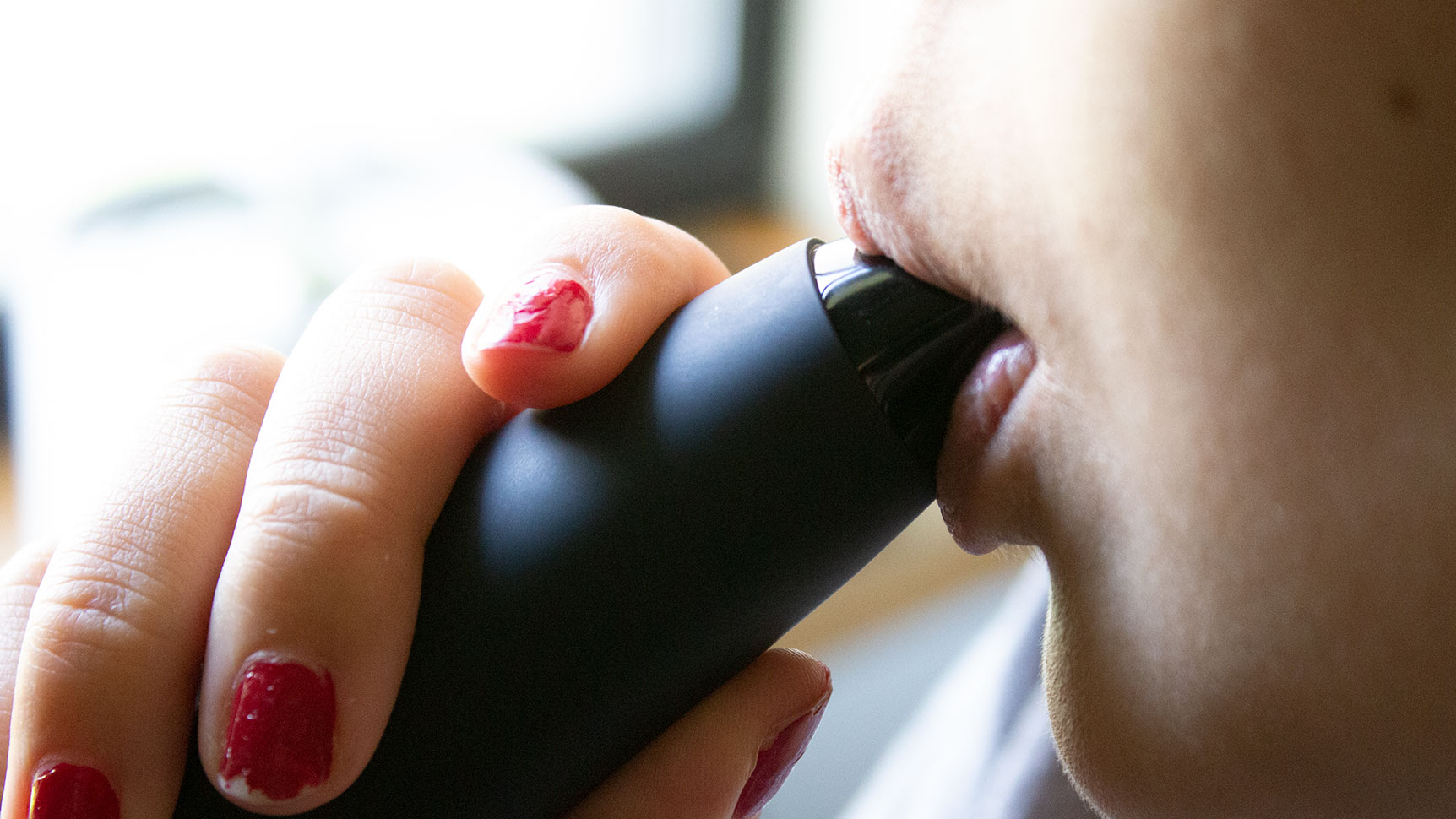
The app also adjusts its recommendations for physical activity. Ideally, you’re supposed to take a measurement before your workout and again 30 minutes after. I didn’t always do this, but when I did it was helpful to see how different exercises impacted which type of fuel I was burning. Generally, if I notched a 3 before a 30-minute run, I was most likely going to be a 1 or a 2 after. The same was true for strength exercises. It was also helpful that when I put in longer activities, like a 2-hour hike, it would increase my recommended carb intake for the day. Crucially, it also broke down when I should fuel before a long activity, and what type of carb I should choose.
However, Lumen did not replace my regular food-logging app. So while it does have solid built-in resources, it required more back-and-forth between apps than I would’ve liked. On that note, while the app is thoughtfully designed, I will say that getting started is a little tedious. Calibration is a whole process, requiring several readings over the course of a few days that are also precisely timed to your meals. It can be frustrating, especially if you don’t eat according to a regular schedule. That said, once the calibration process is done, you’ll likely only take 1-3 measurements a day at most. (Unless you’re one of those beasts who does multiple workouts per day.)
I didn’t have a way to test how precise my readings were, because the clinical Respiratory Exchange Ratio (RER) tests that Lumen’s technology is based on are expensive and not easily accessible to the average person. Anecdotally, my results largely followed my expectations (though occasionally they didn’t). If I ate a huge pasta dinner at 9:30 p.m. one night, then my score went way up the next morning. If I ate chicken breast and broccoli at 7:30 p.m., it went down. The times when a score was higher or lower than I expected usually happened after exercise, and there is also an option in the app to log factors that may have contributed to unexpected readings.
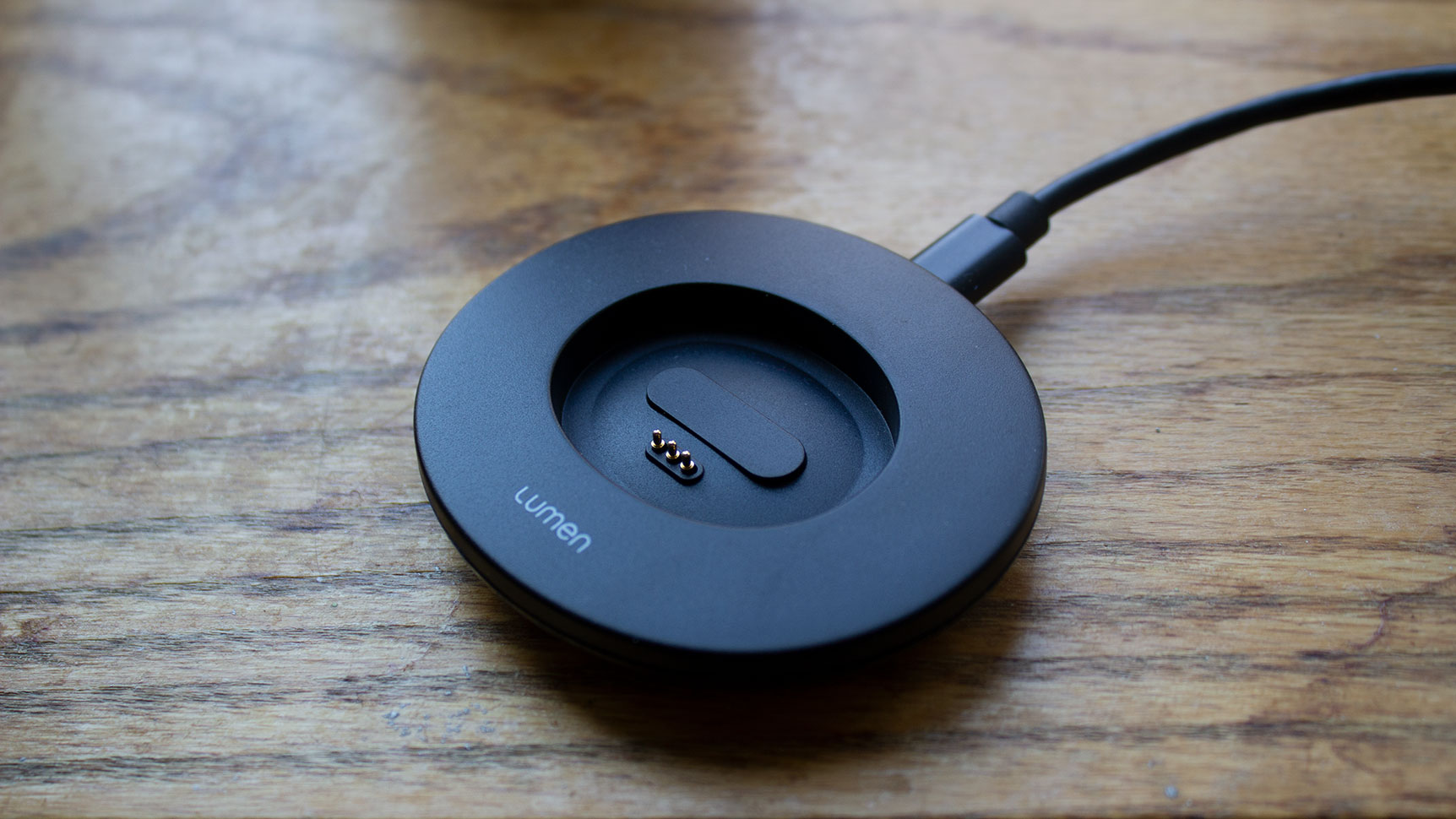
Lumen says its technology has been validated, and the founders have also released their own research. It’s important to be wary of scientific claims in this particular space — many health gadgets say they are backed by science, but that “research” sometimes ends up being little more than a hastily thrown together white paper. (See: the infamous Daysy fertility tracker.) Lumen does a better job, but I’d still take it with a pinch of salt. The validation study they sent me is primarily focused on whether the device delivers results comparable to clinical RER tests, which the study concluded to be the case.
And while the study is authored by researchers from San Francisco State University, there’s also a note that it was supported by Metaflow Ltd, the company behind Lumen. The study wasn’t peer-reviewed, but at the very least the research outlines methodology, study design, results, and quotes several reference studies from reputable sources. While it would be gravy if the studies Lumen sent me were published in a peer-reviewed journal, I’ve seen no evidence of Lumen or its founders making spurious, overblown claims of what this gadget is intended to do.
But the real question is: Did I lose a lot of weight and get shredded like I wanted? Eh. I lost about three pounds over six weeks, which is actually a sustainably healthy, though not dramatic, rate. My smart body composition scale also says I’ve gained some muscle and lost fat (though smart scales are not the most accurate when it comes to composition). I would say my energy during runs is sometimes great, but also occasionally horrible. So, same as usual, though I did manage to break through a plateau I’ve been struggling with for months. Can I directly attribute my modest gains to using Lumen? Not entirely, but I certainly think it helped me stay on track.
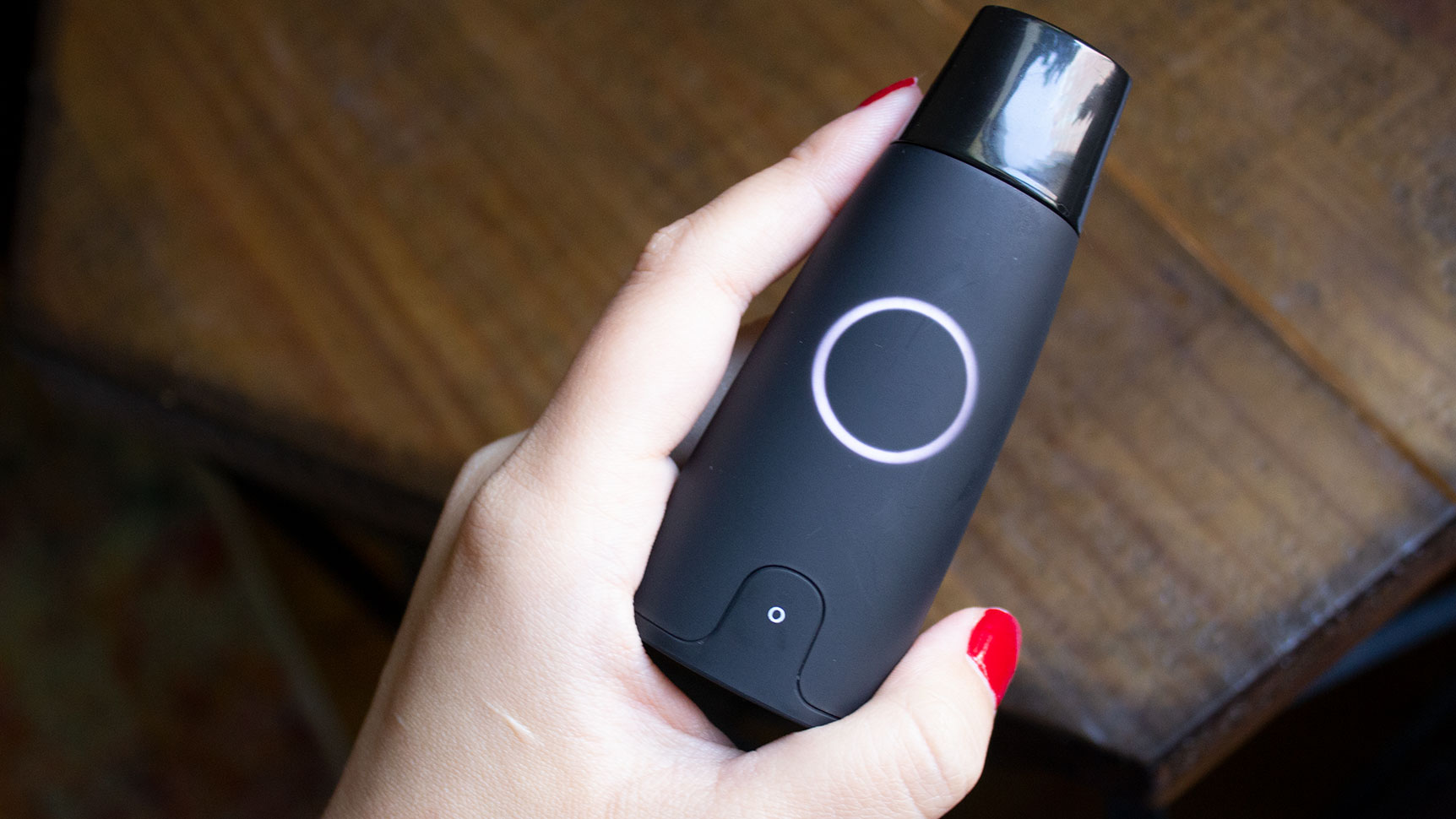
A note: Lumen does encourage a degree of fasting, though not in a way that would be dangerous for most people. The app advises you to eat dinner by 8 p.m. and try not to snack until breakfast the next morning. I was recommended a goal of 12 hours of nighttime fasting, but was never penalised for the occasional after-dinner scoop of ice cream. Still, it’s a thing to consider if you have struggled with body dysmorphia or an eating disorder.
At $US350 ($508), Lumen isn’t cheap. However, as far as wellness and fitness gadgets go, it’s not outrageously priced given its feature set and how much nutritionist visits, fitness apps, and personal trainers cost over time. On the plus side, there’s also no subscription fee. That said, it’s a bit steep for casual use. You’ll probably get the most value out of it if you’re someone who is already serious about food-logging and well-read on the subject of fitness nutrition.
I’ve used Lumen religiously every day for the past six weeks and plan to stick with it for at least a few more months. I genuinely can’t say that about every product I test.
README
- A $US350 ($508) gadget that analyses your breath to see if you’re burning carbs or fats.
- Good app experience, though initial calibration is tedious.
- Well-designed, portable device.
- It won’t magically boost your metabolism; it’s more of a tool to see if you’re striking the right nutritional balance for your goals.
